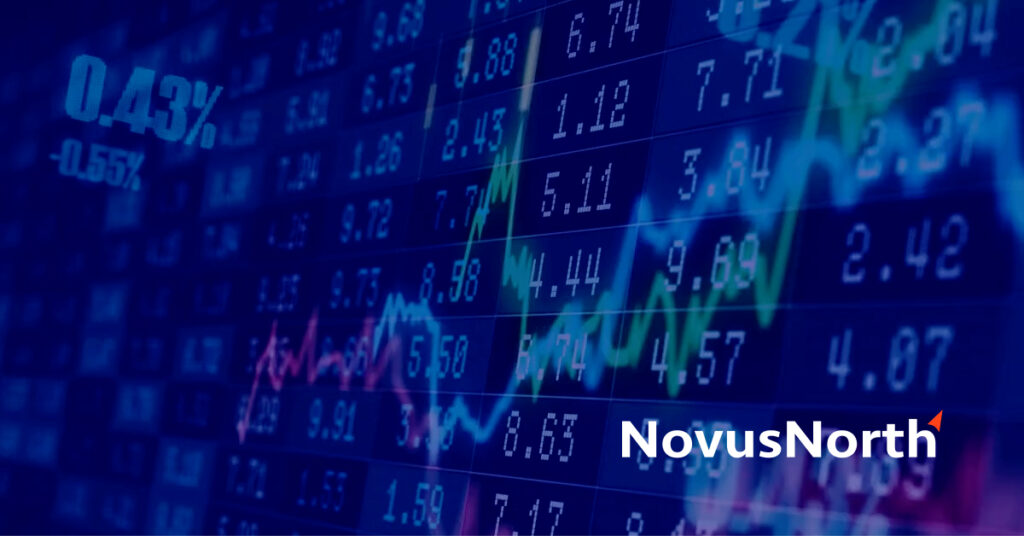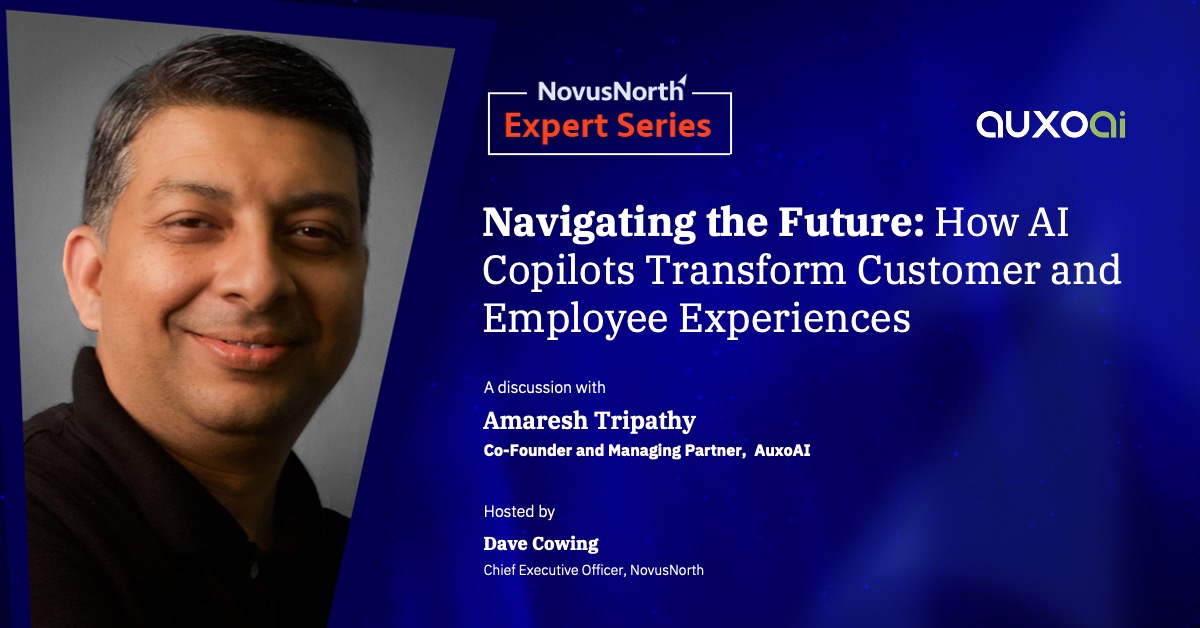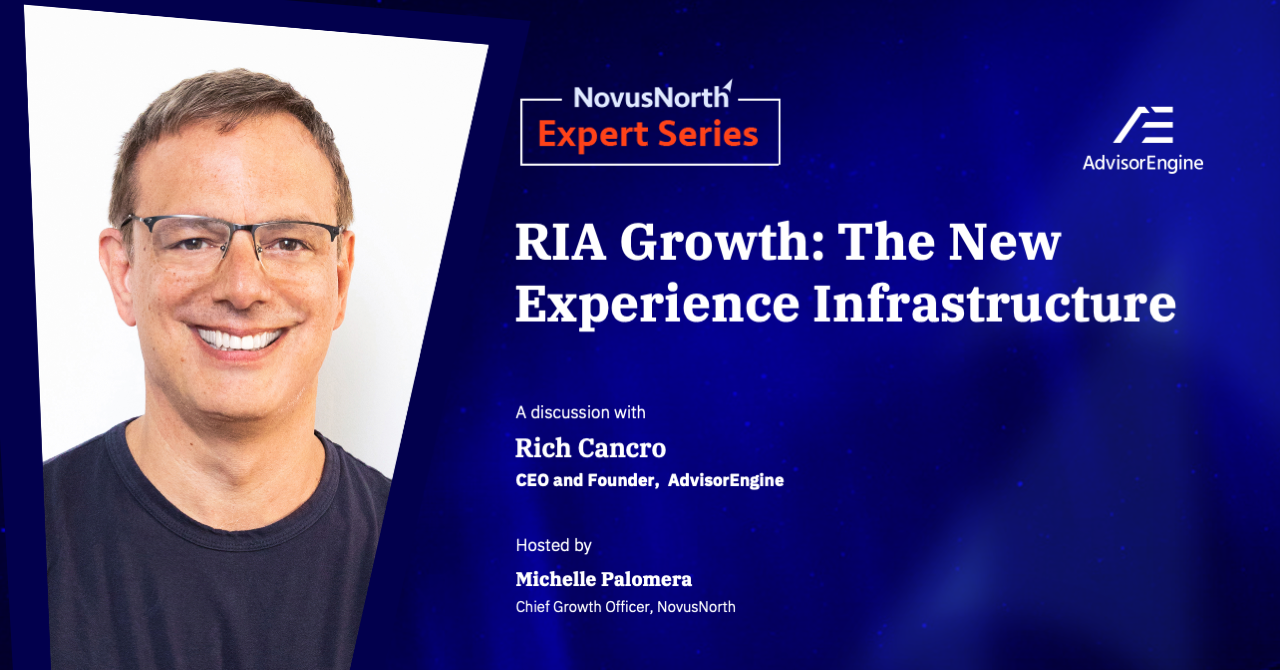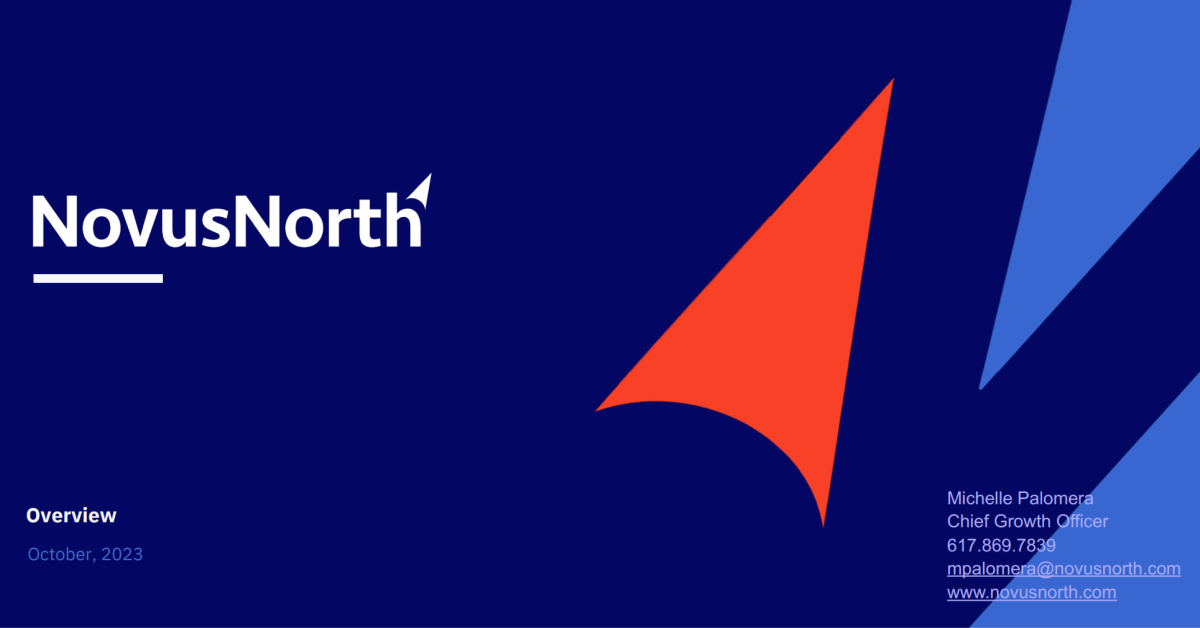In this edition of NovusNorth’s thought leadership conversation, we had an opportunity to meet with Andy Greenawalt, the co-founder and Chief Story Teller of Storyhub.
Andy Greenawalt, has spent the last 30 years building early-stage companies on new business models. He has deep knowledge in taking high volumes of data and converting it into digestible pieces of information that can be processed by Humans and be valuable insights to drive outcomes for their organizations.
Storyhub is a daily newsfeed of insights mined from customers’ existing CX tools. Storyhub’s technology is designed to keep you one step ahead of negative Customer feedback. This makes Andy the perfect candidate to discuss our topic of how Product Experiences can be improved by sharing Data & Analytics through a Human-Centered lens.
NovusNorth is an expert-lead provider of product design, development and delivery services for the FinTech and financial services industry. At NovusNorth, we believe that great digital experiences drive great outcomes.
In this article, we summarize the conversation between Mona Champaneri and Andy Greenawalt.
Read the Transcript
Q: When you think of being “Human Centric” at Storyhub, what does that mean?
Andy Greenawalt
In every business we have, we have customers on one side and their experiences and employees on the other side. Increasingly we have these mechanisms called our businesses, which are all the technology and processes that hold them together. So being human-centric is about honoring those two realities. It use to be that the stores I would go to were around the corner, and now every great competitor is a single click away. So, understanding how to keep a focus on your customers’ experience is the battleground that everyone fights.
To keep your customers at the primary point of your thinking, your employees need to stay in that mode as well. As we think about human centricity, it’s about honoring the realities of someone’s day. It’s about giving them tools that don’t force them into different mental states. It’s about keeping the focus on the customer.
We’ve all had these experiences, whether it’s Starbucks or Disney or some of the greats, you realize, they’re thinking about me. Whether they really are or have systems so good that they can pretend they are. Either way, you think, I had a great experience. When we think about human-centricity, it’s about leveling up our technology using all the insights in the data to help us serve our customers better.
“When we think about human-centric, it’s about leveling up our technology using all the insights in the data to help serve our customers better.”
– Andy Greenawalt
“When we think about human-centric, it’s about leveling up our technology using all the insights in the data to help serve our customers better.”
– Andy Greenawalt
Q: Andy, you mentioned the cost in time and cognitive load of employees needing to shift their thinking. Can you elaborate on this a bit more?
Andy Greenawalt
When you think about any person’s job, they have a certain sort of horizon and when you’re dealing with customer experience, the time horizon is right now. The time horizon is the next 15 minutes, two hours, the commodity that is scarce is time.
For an employee to have to go from, being customer-facing, empathizing, listening, doing all the things that we do with people to engaging with their systems, this can be very cumbersome. It’s a real burden that’s being forced upon the employee to be shifting between modes.
Brain science is very clear on this, that it’s an incredibly costly process. There’s actually research that indicates when one is being analytic that actually suppresses empathy. When one is empathetic, it suppresses analytics. So, humans are meant to do one thing or the other.
To deliver a great customer experience, you have to be mindful of how you’re pulling employees between different roles because that will really affect how good a person they can be at that critical touchpoint with customers.
“When you’re dealing with customer experience, the time horizon is right now.”
– Andy Greenawalt
“When you’re dealing with customer experience, the time horizon is right now.”
– Andy Greenawalt
Q: As a startup during the Pandemic, how has the Pandemic impacted Human-Centric thinking?
Andy Greenawalt
As a startup, it cut us off from a lot of contacts that you typically get, but it also forced a reflection upon how people work. One of the big things that we realized is the importance of cadence. The cadence of a week, what is your Monday morning kickoff and your Friday Happy Hour look like. How do your months begin and end? How are your quarters and years going to go? All these different critical touchpoints let us, human beings, understand where we are.
On Storyhub, we had everything in a newsfeed. So, what we’re doing was looking at all the critical operational systems, running very broad-spectrum analytics, and surfacing the findings as stories.
In the beginning, that was just a feed of stories. A critical reflection that we had, while understanding the cadence, was to say there are things that I need to know daily. And a daily thing is different than a weekly thing, which is different than a monthly thing or a quarterly thing. It really made us reflect on it like the Daily News vs, the Sunday Times. These things are sort of superhuman primitives. I think the sequester and the breaking of all our cycles in through COVID really helped our thinking clarify probably faster than it would have otherwise. So, the pandemic was good on that front.
Q: What types of clients has Storyhub worked with and can you give us some examples of solutions have you delivered?
Andy Greenawalt
Our market right now is customer experience in eCommerce, such as direct-to-consumer brands. Where their relationship with their customers is fundamentally different because they own everything from the customer relationship back to your product production. They have an incredibly dense data problem because they’re hooking together a dozen or more tools to be able to do everything that they’re doing. A dozen or so tools are great because each one is really good at its task, but it’s super easy to lose the customers through the data. What Storyhub does, is operate as a smart layer that fits into that stack and is analyzing all of their data.
We provide a daily forecast for the CX leader. What a CX leader knows is bad days can be really bad. If you just know about the bad day a little bit earlier, it can be incredibly helpful to get your head in the right place with your employees and customers. What we’re doing is running data models from all the inputs that affect the volume that affect the volatility, and letting them know if it is going to be a sunny day or if it’s going to be cloudy.
Other things are what we call a customer rescue. This is a story that identifies people who have had too many back and forths with an agent, or they’ve been waiting too long. It’s essentially a bad experience in process. What those stories do is they reach out through the data, do all the and surface a list of customers that are experiencing the pain points and provide a direct link to their Zendesk.
An example I use all the time is, somewhere in the supply chain, someone can change the size of the small dress from Small to a number like 37. So instead of having size mentioned, 8% to 10% it was much higher (Related Story Hub Article: Decisions Fuel – What is it?)
We also share data on customers such as, how many new customers did you have? Where did they come from? How much did they spend? How are they different from one another? How do men and women differ? How do different regional cities differ? Different product combinations? We’re providing eCommerce companies with this super tactical visibility out of their data.
About The Experts

Andy Greenawalt
Co-founder and Chief Storyteller of Storyhub
Andy is a lifelong student of humanity, inventor and a serial entrepreneur. His career spans the last 30 years building early companies on new business models including a two sided marketplace in 1990, SaaS and security in the cloud in 1997 and Regtech in 2008. Andy has been an active member of the Connecticut tech community, angel investor and active in philanthropy with Social Venture Partners.
In this edition of NovusNorth’s thought leadership conversation, we had an opportunity to meet with Andy Greenawalt, the co-founder and Chief Story Teller of Storyhub.
Andy Greenawalt, has spent the last 30 years building early-stage companies on new business models. He has deep knowledge in taking high volumes of data and converting it into digestible pieces of information that can be processed by Humans and be valuable insights to drive outcomes for their organizations.
Storyhub is a daily newsfeed of insights mined from customers’ existing CX tools. Storyhub’s technology is designed to keep you one step ahead of negative Customer feedback. This makes Andy the perfect candidate to discuss our topic of how Product Experiences can be improved by sharing Data & Analytics through a Human-Centered lens.
NovusNorth is an expert-lead provider of product design, development and delivery services for the FinTech and financial services industry. At NovusNorth, we believe that great digital experiences drive great outcomes.
In this article, we summarize the conversation between Mona Champaneri and Andy Greenawalt.
Read the Transcript
Q: When you think of being “Human Centric” at Storyhub, what does that mean?
Andy Greenawalt
In every business we have, we have customers on one side and their experiences and employees on the other side. Increasingly we have these mechanisms called our businesses, which are all the technology and processes that hold them together. So being human-centric is about honoring those two realities. It use to be that the stores I would go to were around the corner, and now every great competitor is a single click away. So, understanding how to keep a focus on your customers’ experience is the battleground that everyone fights.
To keep your customers at the primary point of your thinking, your employees need to stay in that mode as well. As we think about human centricity, it’s about honoring the realities of someone’s day. It’s about giving them tools that don’t force them into different mental states. It’s about keeping the focus on the customer.
We’ve all had these experiences, whether it’s Starbucks or Disney or some of the greats, you realize, they’re thinking about me. Whether they really are or have systems so good that they can pretend they are. Either way, you think, I had a great experience. When we think about human-centricity, it’s about leveling up our technology using all the insights in the data to help us serve our customers better.
“When we think about human-centric, it’s about leveling up our technology using all the insights in the data to help serve our customers better.”
– Andy Greenawalt
“When we think about human-centric, it’s about leveling up our technology using all the insights in the data to help serve our customers better.”
– Andy Greenawalt
Q: Andy, you mentioned the cost in time and cognitive load of employees needing to shift their thinking. Can you elaborate on this a bit more?
Andy Greenawalt
When you think about any person’s job, they have a certain sort of horizon and when you’re dealing with customer experience, the time horizon is right now. The time horizon is the next 15 minutes, two hours, the commodity that is scarce is time.
For an employee to have to go from, being customer-facing, empathizing, listening, doing all the things that we do with people to engaging with their systems, this can be very cumbersome. It’s a real burden that’s being forced upon the employee to be shifting between modes.
Brain science is very clear on this, that it’s an incredibly costly process. There’s actually research that indicates when one is being analytic that actually suppresses empathy. When one is empathetic, it suppresses analytics. So, humans are meant to do one thing or the other.
To deliver a great customer experience, you have to be mindful of how you’re pulling employees between different roles because that will really affect how good a person they can be at that critical touchpoint with customers.
“When you’re dealing with customer experience, the time horizon is right now.”
– Andy Greenawalt
“When you’re dealing with customer experience, the time horizon is right now.”
– Andy Greenawalt
Q: As a startup during the Pandemic, how has the Pandemic impacted Human-Centric thinking?
Andy Greenawalt
As a startup, it cut us off from a lot of contacts that you typically get, but it also forced a reflection upon how people work. One of the big things that we realized is the importance of cadence. The cadence of a week, what is your Monday morning kickoff and your Friday Happy Hour look like. How do your months begin and end? How are your quarters and years going to go? All these different critical touchpoints let us, human beings, understand where we are.
On Storyhub, we had everything in a newsfeed. So, what we’re doing was looking at all the critical operational systems, running very broad-spectrum analytics, and surfacing the findings as stories.
In the beginning, that was just a feed of stories. A critical reflection that we had, while understanding the cadence, was to say there are things that I need to know daily. And a daily thing is different than a weekly thing, which is different than a monthly thing or a quarterly thing. It really made us reflect on it like the Daily News vs, the Sunday Times. These things are sort of superhuman primitives. I think the sequester and the breaking of all our cycles in through COVID really helped our thinking clarify probably faster than it would have otherwise. So, the pandemic was good on that front.
Q: What types of clients has Storyhub worked with and can you give us some examples of solutions have you delivered?
Andy Greenawalt
Our market right now is customer experience in eCommerce, such as direct-to-consumer brands. Where their relationship with their customers is fundamentally different because they own everything from the customer relationship back to your product production. They have an incredibly dense data problem because they’re hooking together a dozen or more tools to be able to do everything that they’re doing. A dozen or so tools are great because each one is really good at its task, but it’s super easy to lose the customers through the data. What Storyhub does, is operate as a smart layer that fits into that stack and is analyzing all of their data.
We provide a daily forecast for the CX leader. What a CX leader knows is bad days can be really bad. If you just know about the bad day a little bit earlier, it can be incredibly helpful to get your head in the right place with your employees and customers. What we’re doing is running data models from all the inputs that affect the volume that affect the volatility, and letting them know if it is going to be a sunny day or if it’s going to be cloudy.
Other things are what we call a customer rescue. This is a story that identifies people who have had too many back and forths with an agent, or they’ve been waiting too long. It’s essentially a bad experience in process. What those stories do is they reach out through the data, do all the and surface a list of customers that are experiencing the pain points and provide a direct link to their Zendesk.
An example I use all the time is, somewhere in the supply chain, someone can change the size of the small dress from Small to a number like 37. So instead of having size mentioned, 8% to 10% it was much higher (Related Story Hub Article: Decisions Fuel – What is it?)
We also share data on customers such as, how many new customers did you have? Where did they come from? How much did they spend? How are they different from one another? How do men and women differ? How do different regional cities differ? Different product combinations? We’re providing eCommerce companies with this super tactical visibility out of their data.
About The Experts

Andy Greenawalt
Co-founder and Chief Storyteller of Storyhub
Andy is a lifelong student of humanity, inventor and a serial entrepreneur. His career spans the last 30 years building early companies on new business models including a two sided marketplace in 1990, SaaS and security in the cloud in 1997 and Regtech in 2008. Andy has been an active member of the Connecticut tech community, angel investor and active in philanthropy with Social Venture Partners.
Let’s Talk!
Trying to find your new north? Get in touch to find out how we can work together to achieve the business outcomes you need.
Our Latest Insights
Co-founder and Managing Partner of AuxoAI, Amaresh Tripathy on how enterprises can harness AI copilots to provide enterprise value while improving experience for customers and employees.
By NovusNorth
Founder and CEO, Rich Cancro, shares how AdvisorEngine applies their guiding principles of Personal, Scientific and Beautiful to create a world-class wealth management platform for Registered Independent Advisors.
By NovusNorth
A high-level over view of our financial services experience and capabilities. We deliver digital experiences. World class experiences that drive business outcomes for the financial services industry.
By NovusNorth



